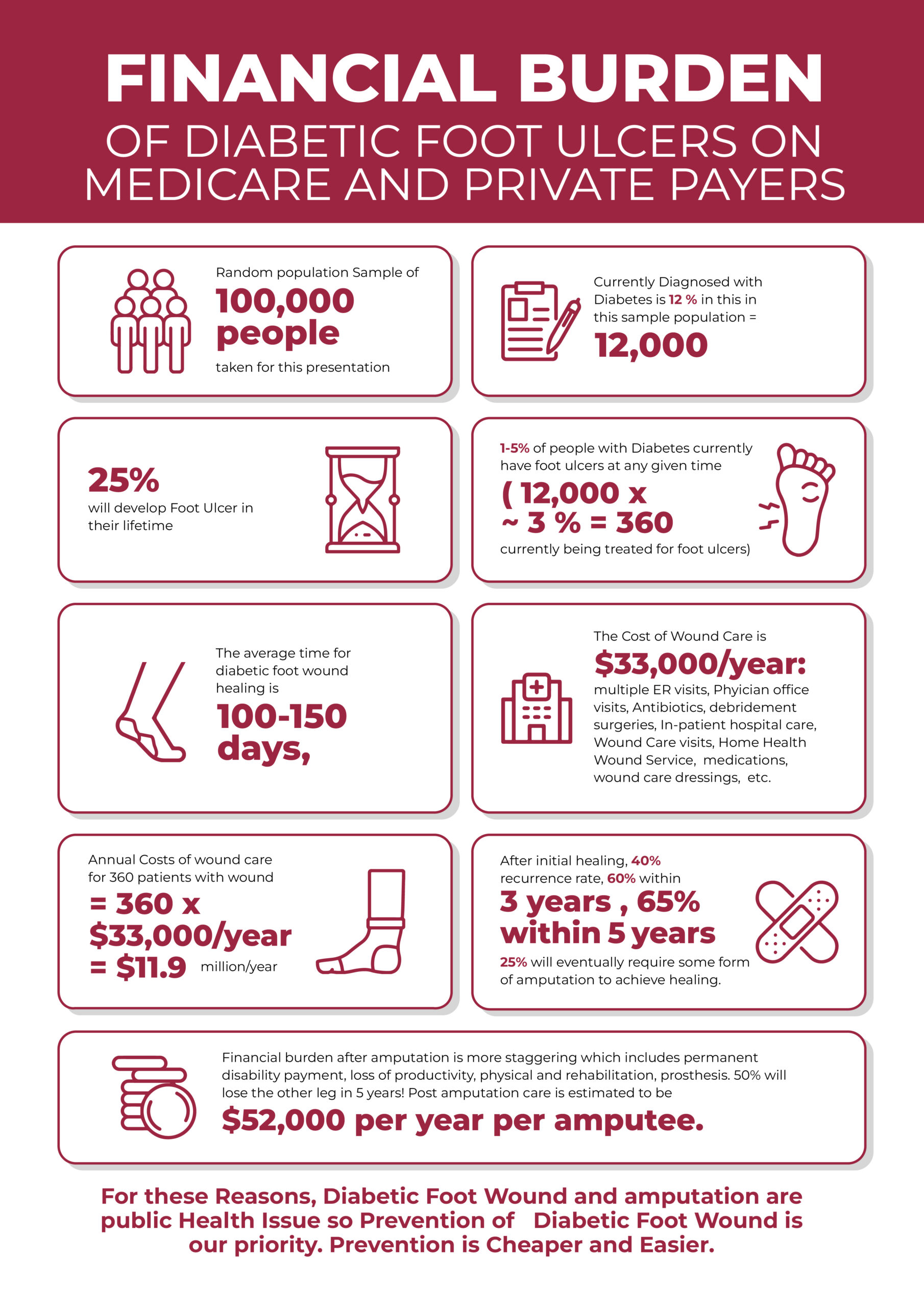National Impact of Diabetic Foot Ulcers on Medicare and Private Payers

We developed this infographic based on information from the National Institutes of Health (NIH) to demonstrate the financial burden of diabetic foot ulcers on Medicare and private payers.
Out of a random sample of 100,000 people, approximately 12,000 will be diagnosed with diabetes.
25% of diabetic patients will develop some form of a foot ulcer. At any given time, 1-5% of those with diabetes will be in treatment for a foot ulcer. Of the original sample, that translates to 360 patients being treated for foot ulcers.
The average time for a diabetic foot wound will take 100-150 days to heal.
The cost of wound care is approximately $33,000 per patient including ER visits, physician visits, surgeries, wound care visits, medications, etc. Annual cost of would care is 360 patients at a rate of $33,000/year which totals $11.9 million/year.
After initial healing, there is a 40% recurrence rate, 60% recurrence rate within 3 years, and 65% in 5 years. 25% will evenutally require some form of amputation to achieve healing.
The financial burden after amputation is more staggering which includes permanent disability payment, loss of productivity, physical rehabilitation, prothesis, etc. 50% will lose the other leg in 5 years. Post amputation care is estimated to be $52,000 per year per amputee.
Reference: www.ncbi.nlm.nih.gov/books/NBK65152/